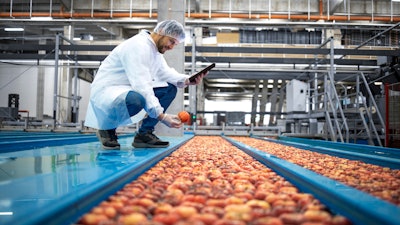
If you and other leadership were unable to set foot in your facility for an entire month, are you confident that food safety would remain a priority? What about six months? Is it possible for even longer? That is exactly what some have been faced with the past year or more, as restrictions have limited access. If you and your team have embraced and fostered a food safety culture, you can be confident that your team will continue to prioritize food safety.
Developing a food safety culture is not a single solution for every food safety challenge, as each food system has its own complexities. Too, if considered as just another addendum to keep on file for an audit, then it will not make a big difference. Instead, food safety culture planning is a step toward progress to perfection. Enhancing an organization’s food safety culture gives individuals and teams the freedom to uphold food safety best practices. For organizations that have a strong desire to strengthen their food safety beliefs, then food safety culture planning will deliver remarkable returns.
Within organizations, visible culture is the way we say we do things. As an example, adhering to a six-step method while washing hands is a behavior often expected from every food handler. A similar policy is likely written into your policy documents and something frontline employees are trained on when they begin in the role. Conversely, invisible culture is the way we actually do things. Do you know whether your employees are washing their hands using this method? And is there a consequence – positive or negative – when an employee does or does not?
In situations like these, employees should understand that food safety antecedents like handwashing are based on organizational expectations. The training you provide should ensure that such expected behaviors and consequences are effectively communicated. If poor training is provided, or inapt consequences are used, this could negatively influence their behavior. Those behaviors may become shaped into hardened beliefs about food safety, which often have a root cause in food safety obstacles.
These obstacles are driven by core psychological behaviors of the workforce and restrain development of a positive food safety culture. Their formation does not happen suddenly. Often, you can see them through a few initial signs. When conducting an audit, I sometimes witness deviations that indicate such obstacles are forming. For example, water dripping from an overhead drain goes unnoticed and unaddressed by an employee. Maybe debris on the floor is not removed by a cleaning crew. These could be initial signs of obstacle formation and a deteriorating food safety culture.
If you are noticing such issues more often, realize they are more than symptomatic. They are an early warning sign and there are likely several obstacles in place, each undermining food safety. With this understanding, there is an opportunity for training on specific food safety-related tasks, providing corrective actions to raise awareness with employees of the consequences of the behavior(s) in question.
Should you start seeing such incidents regularly and employees do not seem to care, then the condition has likely developed into a hardened belief. These will be accompanied by a psychological barrier that drives the action within a specific group or across the organization. Site management should identify and correct these beliefs, as they will trigger the formation of a negative food safety culture in the organization. Unfortunately, once it reaches this point without having been addressed, such deterioration is most often noticed only after a critical food safety issue like a recall.
The question I’m often asked by food manufacturing leadership is “How do I build a food safety culture in my organization?” My response is never about the culture specifically. Instead, I recommend they “Start by removing the food safety obstacles.” Identification of those obstacles and the destruction of hardened beliefs that align with them is key in establishing a strong food safety culture. Until such steps are taken, any support for broader food safety culture initiatives will be denied.
Companies that have developed a deep-rooted food safety culture provide platforms for self-analysis to understand and identify those obstacles at all levels of the organization. Support from leadership is also essential, allowing everyone from management to frontline workers to embrace the opportunity to change and improve their way of doing things with food safety as the focus. Working collectively, they can remove the obstacles that negatively impact their culture.
Establishing a food safety culture does not happen overnight. In fact, it can take years of hard work and commitment from across an organization. By taking an approach that seeks to understand and effectively address these issues at all levels, when changes happen that may challenge food safety, you can be confident that your organization is prepared because of your food safety culture.
Vikas Menon is a Food Safety Professional at AIB International.






















